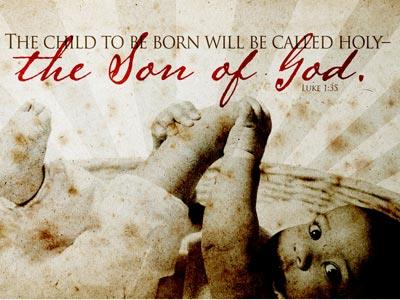-
Your Baby's Baptism Series
Contributed by Freddy Fritz on Nov 28, 2017 (message contributor)
Summary: This sermon examines the biblical perspective, our personal involvement, and the public administration of the sacrament of infant baptism.
Introduction
One of the most significant events in the life of Christian parents is the presentation of their child for the sacrament of baptism. Today Alexia Tyler was presented for baptism.
While obedience to God’s commands is always the key to blessing, an understanding of what transpires in the sacrament of baptism enhances this blessing.
Today I would like to increase our understanding of baptism from what is revealed to us in God’s Word so that we might understand better the blessings God intends for us.
My comments today are taken from a booklet by Dr. Wilson Benton, retired pastor of Kirk of the Hills Presbyterian Church in St. Louis, MO, and a past moderator of the PCA.
Lesson
I would like to develop this lesson as follows:
1. Biblical perspective on the sacrament of infant baptism,
2. Personal involvement in the sacrament of infant baptism, and
3. Public administration of the sacrament of infant baptism.
I. Biblical Perspective on the Sacrament of Infant Baptism
First, the biblical perspective on the sacrament of infant baptism.
God’s promise to be the Savior of his people is called a covenant. A covenant is defined as “an agreement between two or more persons.” This is the essence of what God says in Genesis 17:7, “And I will establish my covenant between me and you and your offspring after you throughout their generations for an everlasting covenant, to be God to you and to your offspring after you.”
It was common in Biblical times (and still is today) to seal a covenant or agreement or promise with a sign. For example, a marriage agreement is sealed with the exchange of wedding rings. God sealed his promise to Noah that he would never again destroy the earth by flooding with the sign of a rainbow. God sealed his promise of salvation to Abraham with the sign of circumcision. Listen to what God says in Genesis 17:11, “You shall be circumcised in the flesh of your foreskins, and it shall be a sign of the covenant between me and you.”
While there is only one covenant of salvation, it is fulfilled in two different administrations. In the old administration of the covenant of grace (corresponding to the Old Testament), circumcision was the sign of the covenant. In the new administration of the covenant of grace (corresponding to the New Testament), baptism is the sign of the covenant.
So, one might ask, “Since the covenant is the same, why has the sign changed?” Let me suggest some answers.
First, circumcision was a bloody rite, a reminder that “without the shedding of blood there is no forgiveness of sins” (Hebrews 9:22).
Baptism, however, is a bloodless rite, a reminder that Jesus Christ’s blood has been shed for the forgiveness of sins.
Second, circumcision, by its very nature, could only be administered to males. Baptism, however, can be administered to males and females, since in Christ there is neither male nor female (cf. Galatians 3:28), and in this respect it is a “better” sign.
And third, the fact that circumcision involves pain and baptism does not indicates the gracious way in which the sign is administered in the new administration of the covenant of grace. Thus, the sign itself becomes a means of grace.
Now, all Christians universally agree that the sign of the promise has changed from circumcision to baptism. However, all Christians do not universally agree that the sign should still be applied to infants of believers. Let me address this issue briefly.
There is no verse in the New Testament that says, “You shall baptize your covenant children.” However, the obvious continuity between the two administrations of the covenant of grace does speak to the issue. Consider the following.
First, from the beginning, true religion has been a family affair. God addressed his promise not merely to Abraham but to his whole family. The Bible is very clear about family solidarity, and ordinarily the faith of the father is the faith of the family. This is hard for us to comprehend in our individualistic age today. Listen again to what God says in Genesis 17:7, “And I will establish my covenant between me and you and your offspring after you throughout their generations for an everlasting covenant, to be God to you and to your offspring after you.”
Second, infants were included in the covenant family and received the sign of the covenant in the Old Testament. All Israelite males from Isaac were circumcised on the eighth day. Now if such a basic sign was to be altered, God would have instructed his people, but the commandment to include children in the covenant family and to administer the sign of the promise to them has never been revoked. The fact that the Lord does not retract the command indicates that the principle and the practice should still stand. In fact, the burden of proof lies with those who would cancel what God has commanded (and never repealed) rather than with those who would continue what God has ordained.

 Sermon Central
Sermon Central



